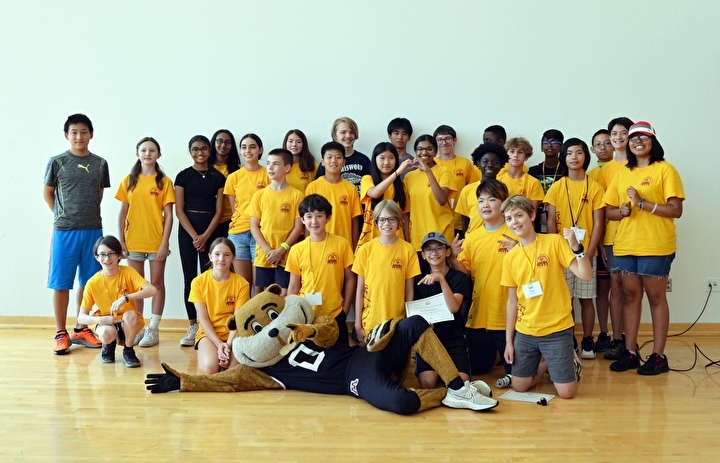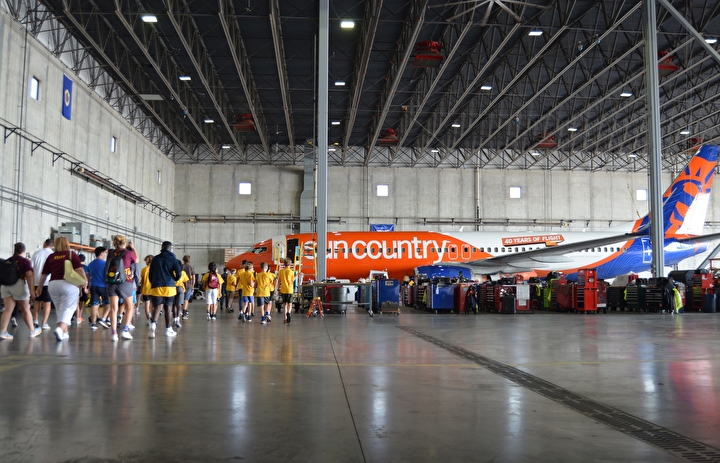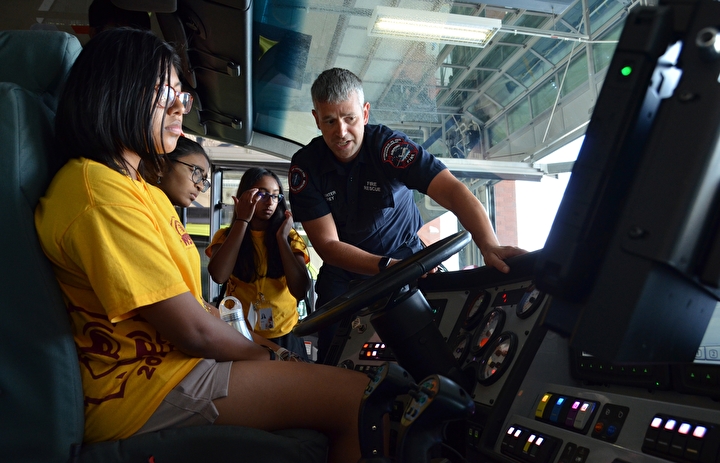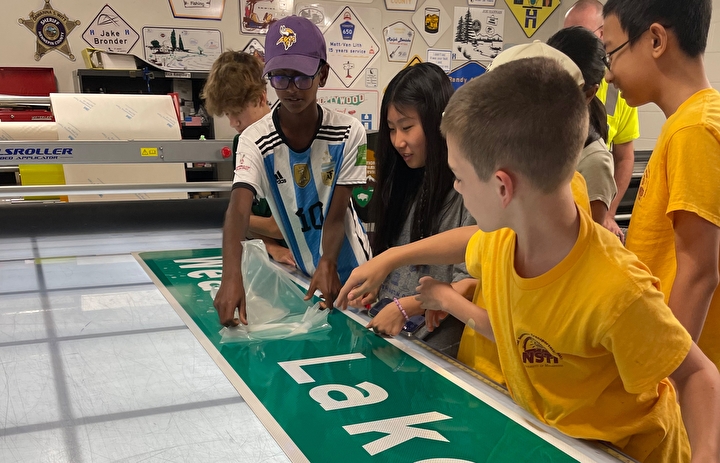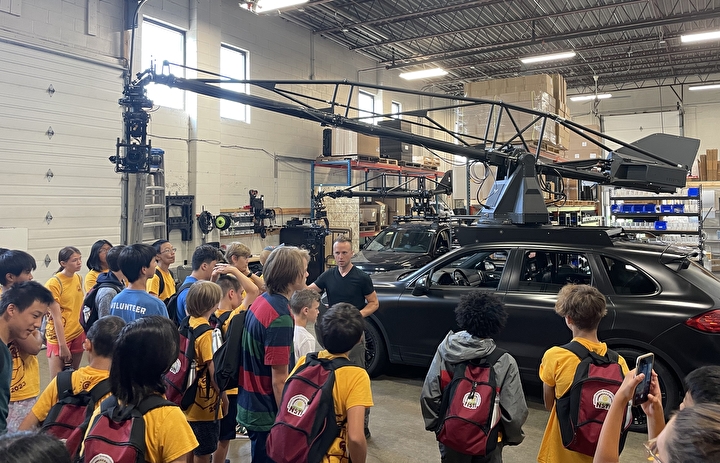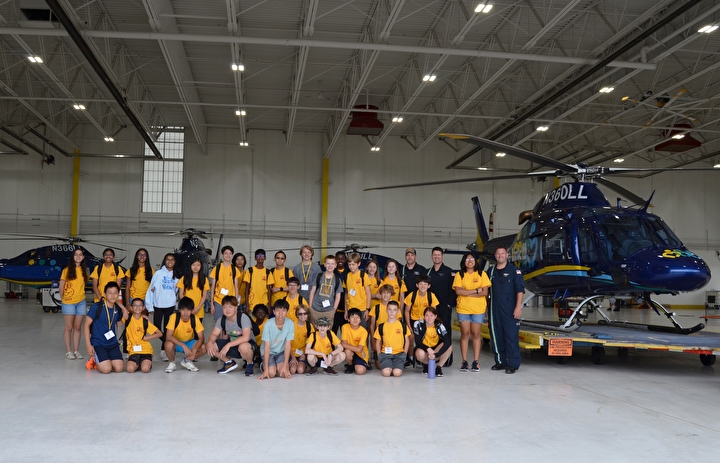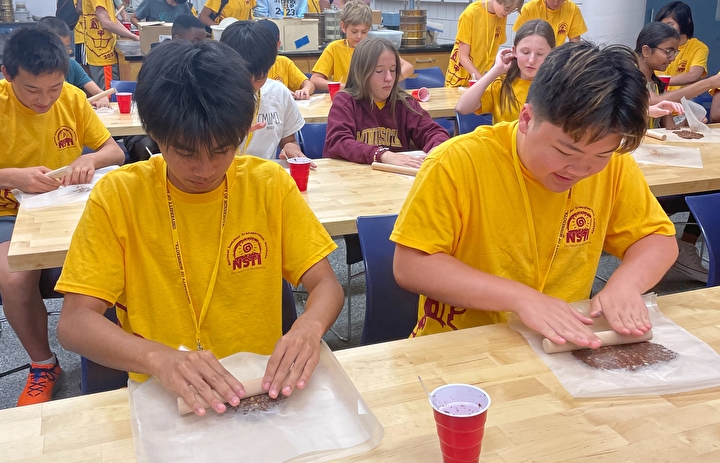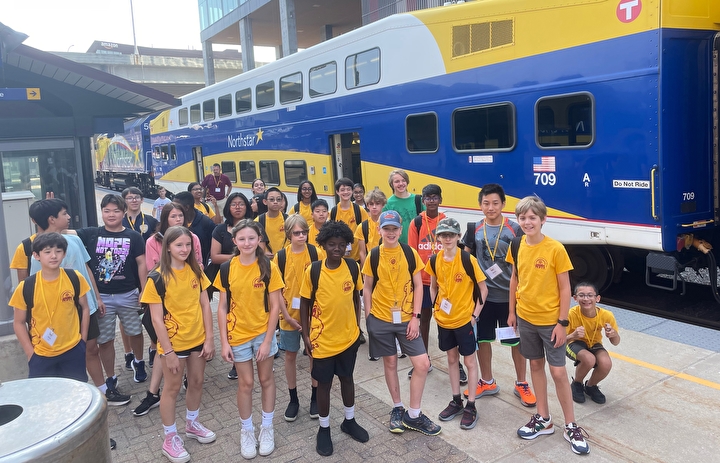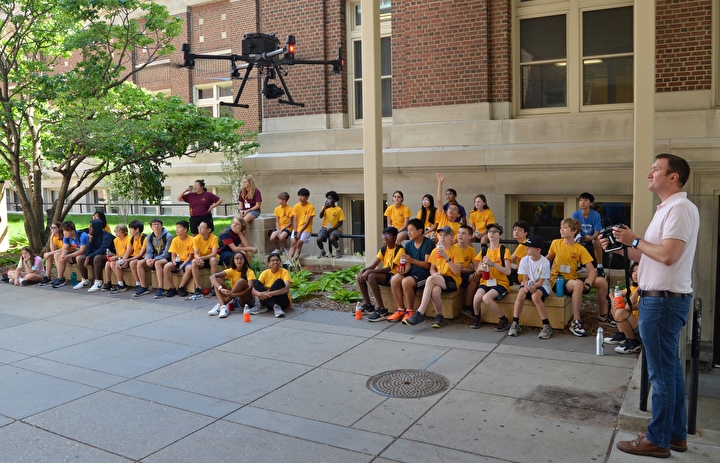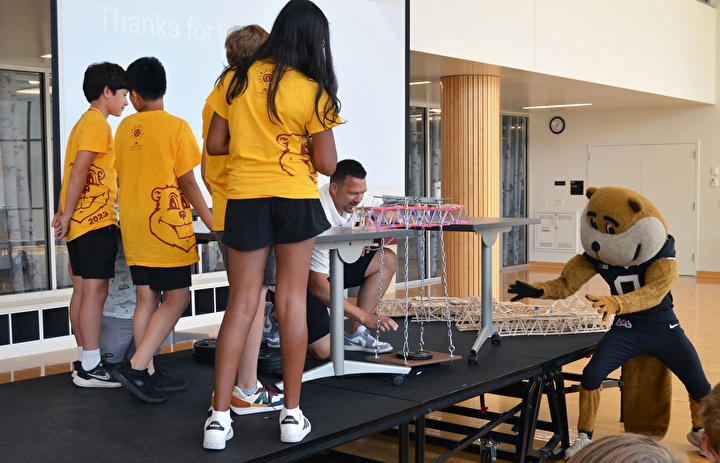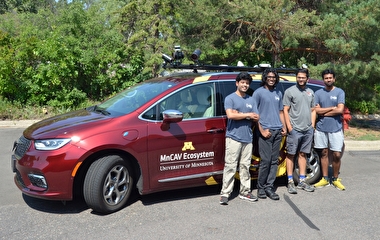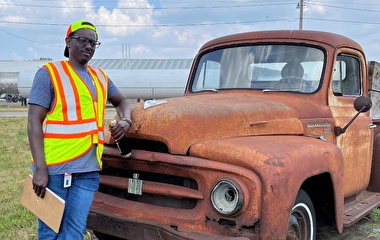
Middle and high school students received an immersive introduction to aviation, bridges, vehicle technology, public works, and more during CTS’s eighth annual National Summer Transportation Institute (NSTI) in July.
Thirty campers entering seventh through ninth grade participated in the free two-week program, which aims to promote STEM disciplines and attract students to transportation-related education and careers. The camp is funded by the Federal Highway Administration and CTS and administered by the Minnesota Department of Transportation (MnDOT).
Activities included experimenting with Ozobot desktop robots, making chocolate “asphalt” cookies, exploring a vehicle technology showcase from The PLUM Catalyst, and taking turns in a drone flight simulator as part of a visit from KLJ. In other hands-on sessions, students used a virtual reality headset to learn about safe driving as part of UPS Road Code and shaped a virtual landscape using MnDOT’s augmented reality sandbox.
In classroom sessions, students learned about bridge design and construction and got tips on public speaking from U of M faculty experts. Campers also took a bus trip around campus to learn about transportation at the U, visited the U of M Bike Center, and toured the U’s Pavement Materials Lab and St. Anthony Falls Laboratory.
Field trip destinations included:
- Life Link III facilities in Blaine, where campers got an up-close look at the planes and helicopters responders use to provide medical transportation.
- Metro Transit, including stops at a bus garage, Northstar train station, and control room.
- HDR in St. Louis Park for an overview of transportation planning and related careers.
- MSP Airport, where students boarded a Sun Country airplane, visited the firehouse and police station, saw a K-9 demo, and toured FedEx’s shipping facilities.
- MotoCrane in Minneapolis to see drones and vehicle-mounted camera rigs used for all kinds of videography.
- Hennepin County, including visits to the county’s traffic management center, signal shop, sign shop, and a construction site.
“Our amazing camp staff and many partners and volunteers worked together to give the campers a unique experience,” said Gina Baas, CTS deputy director. “Hopefully, we were able to inspire this group of students to think about transportation as a career path.”
